Leptin inhibits epileptiform-like activity in rat hippocampal neurones via PI 3-kinase-driven activation of BK channels
- PMID: 12482897
- PMCID: PMC2290718
- DOI: 10.1113/jphysiol.2002.029488
Leptin inhibits epileptiform-like activity in rat hippocampal neurones via PI 3-kinase-driven activation of BK channels
Abstract
The obese gene product, leptin is an important circulating satiety factor that regulates energy balance via its actions in the hypothalamus. However, leptin receptors are also expressed in brain regions not directly associated with energy homeostasis, such as the hippocampus. Here, leptin inhibits hippocampal neurones via activation of large conductance Ca(2+)-activated K(+) (BK) channels, a process that may be important in regulating neuronal excitability. We now show that leptin receptor labelling is expressed on somata, dendrites and axons, and is also concentrated at synapses in hippocampal cultures. In functional studies, leptin potently and reversibly reduces epileptiform-like activity evoked in lean, but not leptin-resistant Zucker fa/fa rats. Furthermore, leptin also depresses enhanced Ca(2+) levels evoked following Mg(2+) removal in hippocampal cultures. The ability of leptin to modulate this activity requires activation of BK, but not K(ATP), channels as the effects of leptin were mimicked by the BK channel activator NS-1619, and inhibited by the BK channel inhibitors, iberiotoxin and charybdotoxin. The signalling mechanisms underlying this process involve stimulation of phosphoinositide 3-kinase (PI 3-kinase), but not mitogen-activated protein kinase (MAPK), as two structurally unrelated inhibitors of PI 3-kinase, LY294002 and wortmannin, blocked the actions of leptin. These data indicate that leptin, via PI 3-kinase-driven activation of BK channels, elicits a novel mechanism for controlling neuronal excitability. As uncontrolled excitability in the hippocampus is one underlying cause of temporal lobe epilepsy, this novel action of leptin could provide an alternative therapeutic target in the management of epilepsy.
Figures
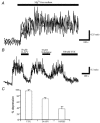
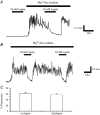
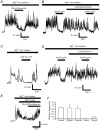
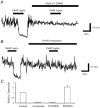
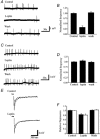

Similar articles
-
Insulin inhibits rat hippocampal neurones via activation of ATP-sensitive K+ and large conductance Ca2+-activated K+ channels.Neuropharmacology. 2003 Jun;44(7):855-63. doi: 10.1016/s0028-3908(03)00081-9. Neuropharmacology. 2003. PMID: 12726817
-
Insulin activates native and recombinant large conductance Ca(2+)-activated potassium channels via a mitogen-activated protein kinase-dependent process.Mol Pharmacol. 2004 Jun;65(6):1352-63. doi: 10.1124/mol.65.6.1352. Mol Pharmacol. 2004. PMID: 15155829
-
Leptin-induced dynamic alterations in the actin cytoskeleton mediate the activation and synaptic clustering of BK channels.FASEB J. 2005 Nov;19(13):1917-9. doi: 10.1096/fj.05-4166fje. Epub 2005 Sep 15. FASEB J. 2005. PMID: 16166199
-
Leptin: a diverse regulator of neuronal function.J Neurochem. 2007 Jan;100(2):307-13. doi: 10.1111/j.1471-4159.2006.04205.x. Epub 2006 Oct 31. J Neurochem. 2007. PMID: 17076761 Free PMC article. Review.
-
Large-conductance Ca2+- activated K+ channels:physiological role and pharmacology.Curr Med Chem. 2003 Apr;10(8):649-61. doi: 10.2174/0929867033457863. Curr Med Chem. 2003. PMID: 12678784 Review.
Cited by
-
Leptin enhances NR2B-mediated N-methyl-D-aspartate responses via a mitogen-activated protein kinase-dependent process in cerebellar granule cells.Neuroscience. 2006;138(4):1137-48. doi: 10.1016/j.neuroscience.2005.11.042. Epub 2006 Jan 18. Neuroscience. 2006. PMID: 16413128 Free PMC article.
-
Roles of Na+, Ca2+, and K+ channels in the generation of repetitive firing and rhythmic bursting in adrenal chromaffin cells.Pflugers Arch. 2018 Jan;470(1):39-52. doi: 10.1007/s00424-017-2048-1. Epub 2017 Aug 3. Pflugers Arch. 2018. PMID: 28776261 Free PMC article. Review.
-
Neural stem cell self-renewal stimulation by store-operated calcium entries in adult mouse area postrema: influence of leptin.Front Cell Neurosci. 2023 Jun 9;17:1200360. doi: 10.3389/fncel.2023.1200360. eCollection 2023. Front Cell Neurosci. 2023. PMID: 37361995 Free PMC article.
-
Leptin-mediated ion channel regulation: PI3K pathways, physiological role, and therapeutic potential.Channels (Austin). 2016 Jul 3;10(4):282-96. doi: 10.1080/19336950.2016.1164373. Epub 2016 Mar 28. Channels (Austin). 2016. PMID: 27018500 Free PMC article. Review.
-
Obesity induces functional astrocytic leptin receptors in hypothalamus.Brain. 2009 Apr;132(Pt 4):889-902. doi: 10.1093/brain/awp029. Epub 2009 Mar 17. Brain. 2009. PMID: 19293246 Free PMC article.
References
-
- Abele AE, Miller RJ. Potassium channel activators abolish excitotoxicity in cultured hippocampal pyramidal neurons. Neuroscience Letters. 1990;115:195–200. - PubMed
-
- Abele AE, Scholz KP, Scholz WK, Miller RJ. Excitotoxicity induced by enhanced neurotransmission in cultured hippocampal pyramidal neurons. Neuron. 1990;4:413–419. - PubMed
-
- Ahima RS, Flier JS. Leptin. Annual Review Physiology. 2000;62:413–437. - PubMed
-
- Alessi DR, Cuendo A, Cohen P, Dudley DT, Saltiel AR. PD 98059 is a specific inhibitor of the activation of mitogen-activated protein kinase kinase in vitro and in vivo. Journal of Biological Chemistry. 1995;270:27489–27494. - PubMed
Publication types
MeSH terms
Substances
LinkOut - more resources
Full Text Sources
Other Literature Sources
Medical
Molecular Biology Databases
Research Materials
Miscellaneous

